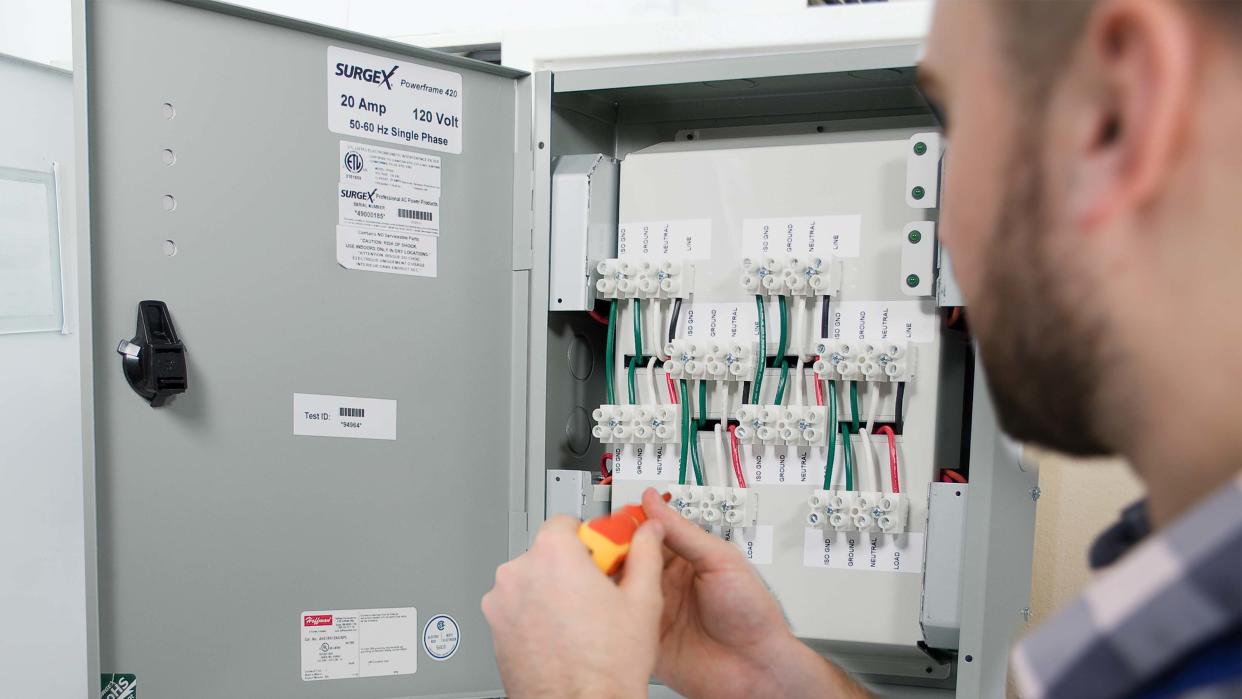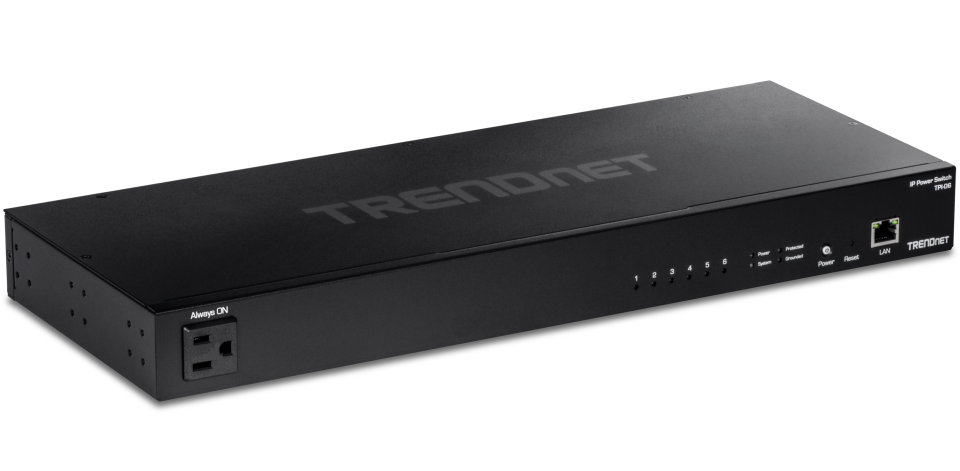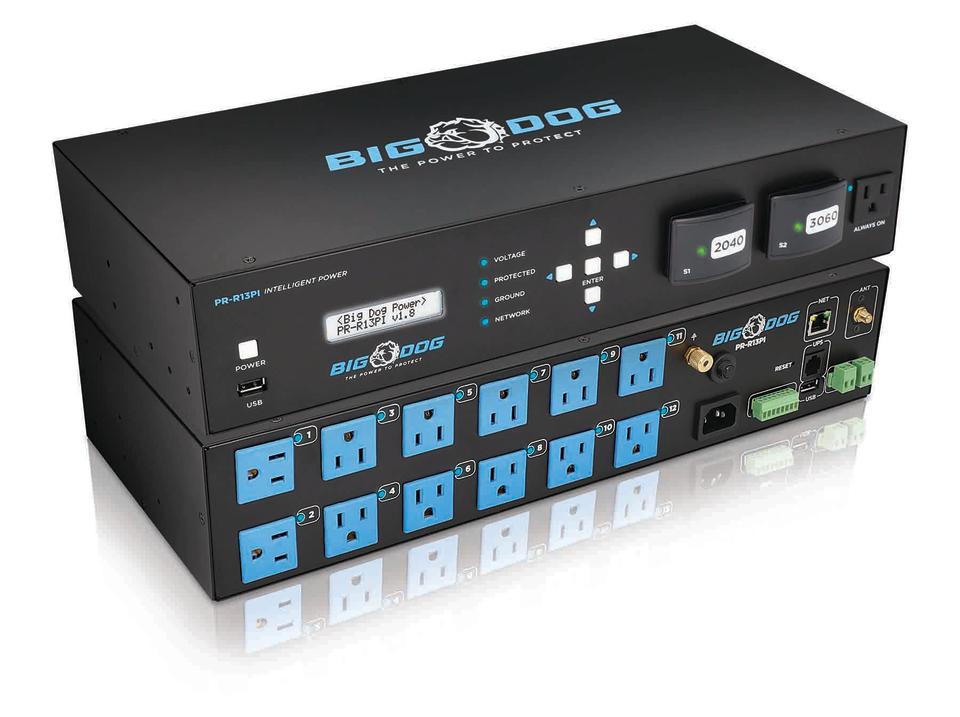Pro AV Equipment: Keep on Running

Any good AV integrator takes pride in building robust, reliable systems. With the right training and experience, it’s likely that they’re able to solve any problem that comes their way. But while AV pros may have the chops to design, integrate, and troubleshoot complex systems, one element remains beyond their control: the quality of the power at their client sites.
[Executive Q&A: Keep It Clean]
Considering the monetary value of the systems AV integrators install—and the fact that electronics function best when power is consistent—this is no small issue. Recently, SCN sat down with several power management manufacturers to discuss their latest solutions that not only address this challenge, but also make it easier for AV integrators to continue to provide the reliability their clients are seeking.
Remote Control
The need for remote monitoring and control of power management systems have driven these systems to the network, either in the form of intelligent systems that operate locally or those that can be accessed in the cloud.
Jeff Mackey, CTS-D, is senior sales engineer at SurgeX, an AV power protection and surge elimination solutions developer known for its Squid line of power management systems. The company recently released SurgeX Connect, a cloud-based power management and monitoring software solution. Mackey noted that this level of convenience has become a necessity for both AV integrators as well as their clients.
Mackey observes that oftentimes when a system fails, a simple reboot is the fix. Rolling a truck to reboot a client’s system is time-consuming and expensive for AV integrators, and the client remains offline while they wait for the technician to arrive.
“If it’s IP-enabled and we can reach it through the cloud-based service, we can do that in a matter of minutes,” Mackey said. “It’s a quicker uptime for the client, which is the primary thing, and we’re not wasting [a lot of] manhours to do that.”
The Cloud Debate
TRENDnet, a networking and surveillance solutions developer, recently introduced the TPI-06, its first networked power distribution unit (PDU). When utilized with TRENDnet Hive, the six-outlet rack-mounted PDU can control, manage, and monitor devices remotely.

Evan Davis, senior manager of solutions engineering at TRENDnet, noted that solutions like these enable AV integrators with a wide client base to streamline monitoring and management remotely. The cloud brings all of these clients into one interface—and once again, there is no need to roll a truck. “You can have PDUs located throughout multiple customers powering multiple types of equipment, and have custom alerts, different management capabilities, and different scheduling for all of these customers,” he added.
Cloud-based power management offers considerable convenience, acknowledged Peter Cook, vice president at Juice Goose, a power management solutions manufacturer. It provides remote access to power management solutions as well as other devices.
[Cloud Power: Decisions, Decisions]
That said, Cook argues that one can suffer from cloud overload: An AV control system may be accessible via one cloud, while a power management system may require administrators to log into another. “Our philosophy, in terms of IP-based or web-based power control, is that we want to integrate with other people’s platforms, so we want to integrate with Crestron or Q-SYS,” he explained. “Or, if it’s a government facility or a large university, they’ve got their own established platform or cloud and we integrate with that—as opposed to creating our own platform, which then has to mesh with something else, and you’ve got different sets of buttons to do different things.”
Installation Considerations
The NEXSYS power management platform by Middle Atlantic Products, a Legrand|AV brand, unites PDUs and UPSs with a common design. The platform is also compatible with Legrand’s RackLink remote monitoring and control technology, and the UPSs feature individual outlet control.
From a hardware perspective, NEXSYS UPSs were designed to facilitate installation, according to Nyron Kahrim, product manager at Legrand|AV. The units come pre-assembled and ready to rack mounted out of the box. He also pointed out the UPS’ detachable power plug provides integrators with more flexibility, especially when they may need to plug it in above the rack.
“The UPS has to sit at the bottom of the rack because it’s the heaviest piece of equipment, [and] you’re not supposed to add extension cords to a UPS to power it up,” Kahrim explained. This solution enables integrators to switch out to a longer power cord—as long as it meets spec—to reach the plug. “Also, if you need a shorter cord for cable management, you can use that as well.”

Ethereal (formerly Metra AV), a power distribution products manufacturer, offers its Big Dog Power line of smart power management products. This includes a modular surge protection design that enables integrators to swap out surge protection modules when they are exhausted, rather than having to replace their entire PDU.
This is important, argued Adam Rogers, product manager at Ethereal, because traditional Metal Oxide Varistor (MOV) systems weaken with time. “There are the everyday surges—the air conditioner turns on, the vacuum cleaner turns on, and even the surges from outside of the [building] eat away at that surge protection,” he said. A modular system takes this into account and facilitates upgrades. “It really makes for integrator-friendly and consumer-friendly installations, because no longer do you have to replace the entire system.”
Selling Power Management
Because the power that any facility receives is inconsistent—and because electronics don’t always tolerate this inconsistency—power management is a necessary component of a Pro AV system, rather than a nice-to-have. “End users spend a lot of money to get these systems up and running," said Shane Roma, product manager at Legrand|AV. "However, the power that these devices are receiving is completely out of the integrator’s control and, more often than not, outside of the end user’s control. For all the time and money that’s been spent on this system, [power management] is a way to ensure that it’s going to stay up and running.”
There is usually more excitement associated with the fancy LED video walls or innovative audio systems, so power management often gets value-engineered out of the design. Roma encourages AV integrators to discuss power management solutions with customers early on to ensure that their AV systems are robust. “The UPS shouldn’t be an afterthought to a reliable AV system,” he added. “It’s a good way to make sure they don’t see a lot of the power anomalies that happen.”
For Rogers, AV integrators must also tap into the benefits of selling remote-enabled power management systems, so they can perform simple tasks immediately, such as device reboots. “It’s not even so much about making it easy on you, the integrator, to not have to roll a truck,” he explained. “It’s now become almost mandatory because of the amount of processing that’s being packed into the devices that are powered by our PDUs. When the system is crashing and you have to roll a truck every time—and the client is talking to someone else who has never had to do that because their integrator took care of it remotely—eventually you’re going to lose those clients.”

